Trittons: Flourishing through the fifties
By Mary Howells - 2022 Queensland Business Leaders Hall of Fame Fellow | 10 November 2023
Guest blogger: Mary Howells - 2022 Queensland Business Leaders Hall of Fame Fellow.
Thank you to Ken Tritton for his generous time in assisting with the documenting of the final years of Tritton’s original furniture business.
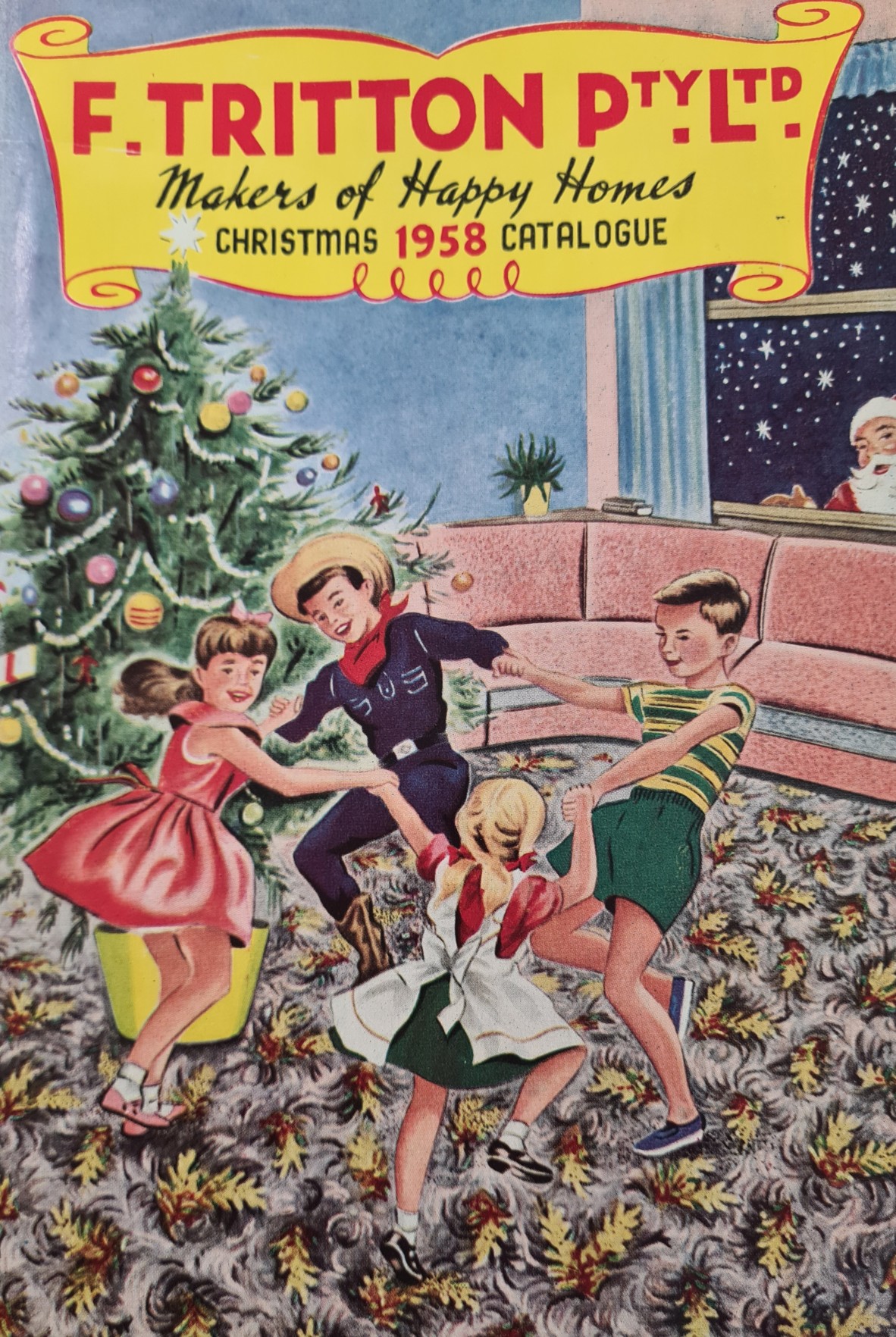
Colour cover of F. Tritton Pty Ltd Christmas catalogue 1958./ F. Tritton Pty Ltd, F Tritton Limited. 1958. John Oxley Library. State Library of Queensland
The early 1950s was a time of intense urban expansion. The Queensland Housing Commission and Commonwealth War Service Commission built homes across the city to cater for returned soldiers and their brides, and for those whose construction plans had been delayed by war time shortages of materials and labour. There was also an influx of migrants needing accommodation. Brisbane City Council were struggling to provide infrastructure supporting the annual approval of 5000 new homes from the late 1940s into the early 50s. There was also a post-war baby boom. Life was rapidly changing. The war-imposed petrol rationing finally ended in February 1950, and the employment rate continued to grow. People were optimistic for the future.¹
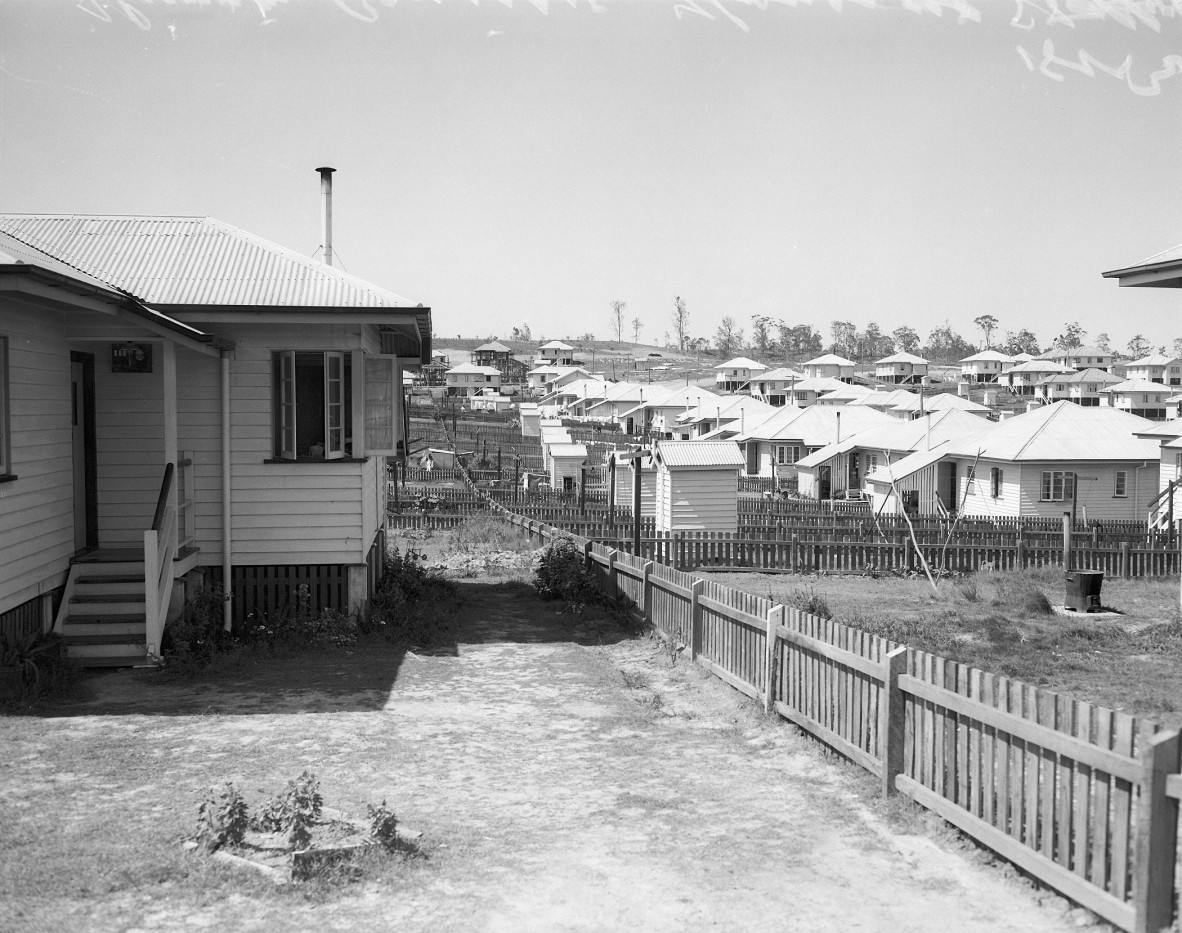
Queensland Housing Commission Homes, Stafford, Brisbane, 1952. John Oxley Library. State Library of Queensland. Image number: 28118-0001-2357.
Of course, Trittons were happy to provide everything required for a new home and a new baby. Trittons began advertising toys and nursery furniture.²
In March 1954, the royal visit of the recently crowned Queen Elizabeth II and her husband Prince Philip provided an exciting diversion to the residents of Brisbane. Eliza Tritton was one of five local women involved in charitable organisations chosen to be presented to the Queen at a ceremony in City Hall. Eliza was president of the District Nursing Association (later St Luke’s Nursing Service) and her work with the Queen Alexandra and Margaret Marr Homes for Children was also recognised. Trittons had made an array of furniture for use by the Royals, with some pieces specifically designed for them by Tritton’s employee, Douglas Charles Willson Felgate.³
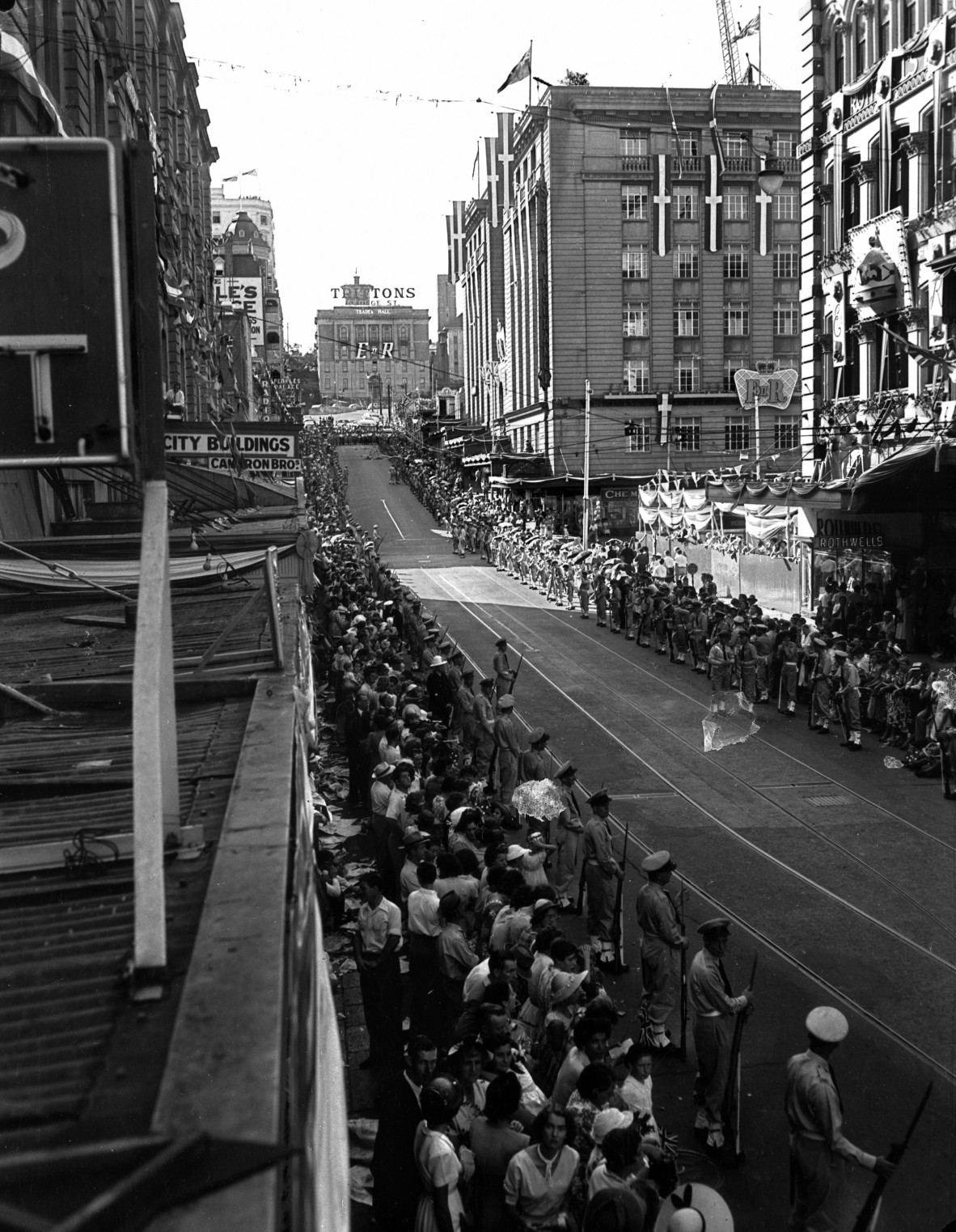
Crowds line Edward Street for a glimpse of Queen Elizabeth and Prince Charles, Brisbane, The Trittons sign atop Trades Hall, dominates the street scape, March 1954. John Oxley Library. State Library of Queensland. Negative number: 105673
In 1958, Trittons was stocking up for the planned introduction of television, displaying television sets in their George Street window. Once broadcasting began in August 1959, customers gathered around the store window to see these new devices. The price was prohibitive for many families, and shop windows became the preferred viewing methodology for many years to come.⁴
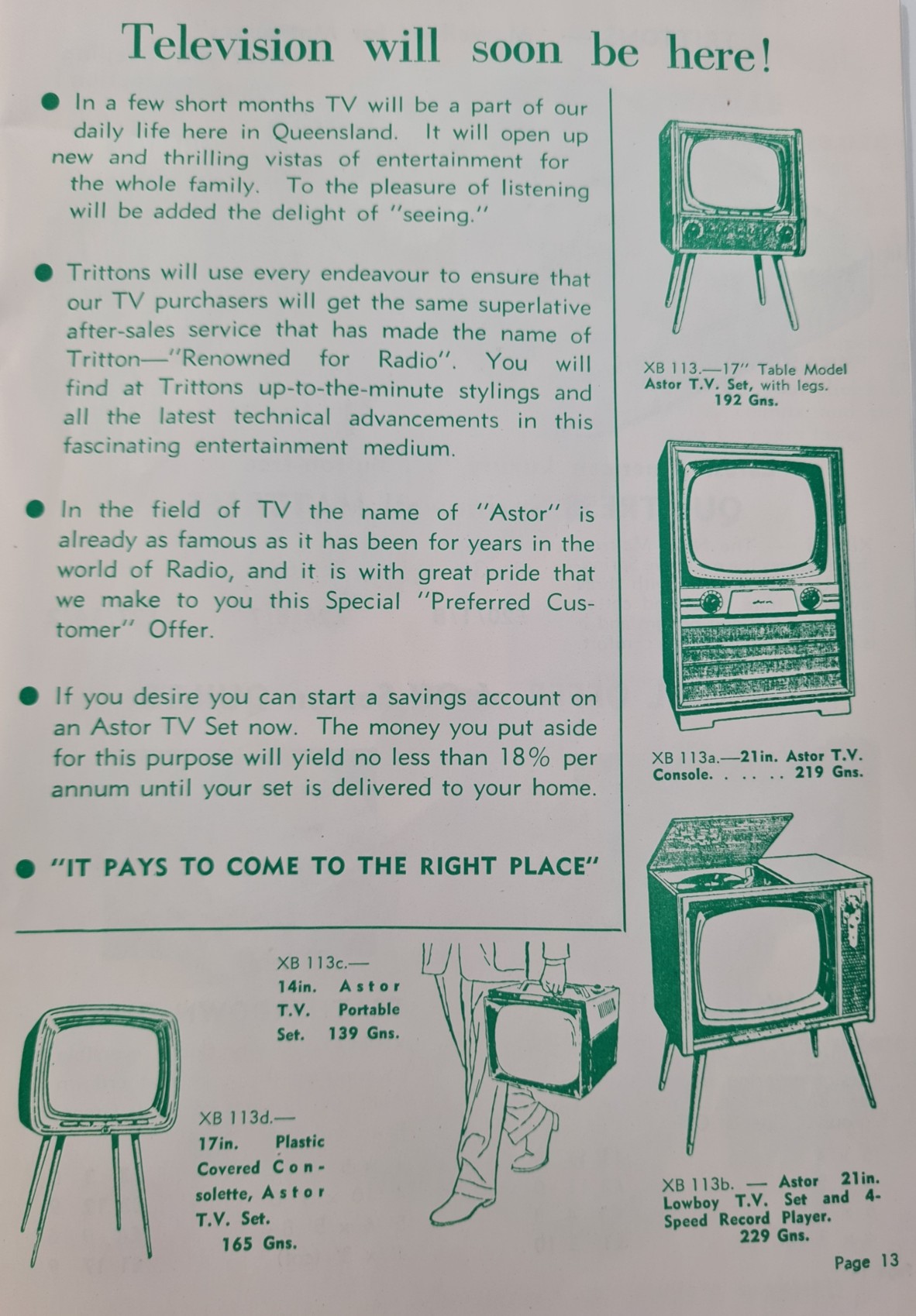
TV advertisements on page 13 of F Tritton Pty Ltd Christmas catalogue 1958. F.Tritton Limited. John Oxley Library. State Library of Queensland. Record Number: 9912049434702061
In February 1959, Roy Tritton registered Tritton Guarantee Corporation Limited, with a view to enter into the banking sector, which never eventuated. Roy Tritton began slowly expanding stores beyond central Brisbane. Negotiations began in 1963 to acquire George Taylor’s furniture store in Nerang Street Southport.⁵
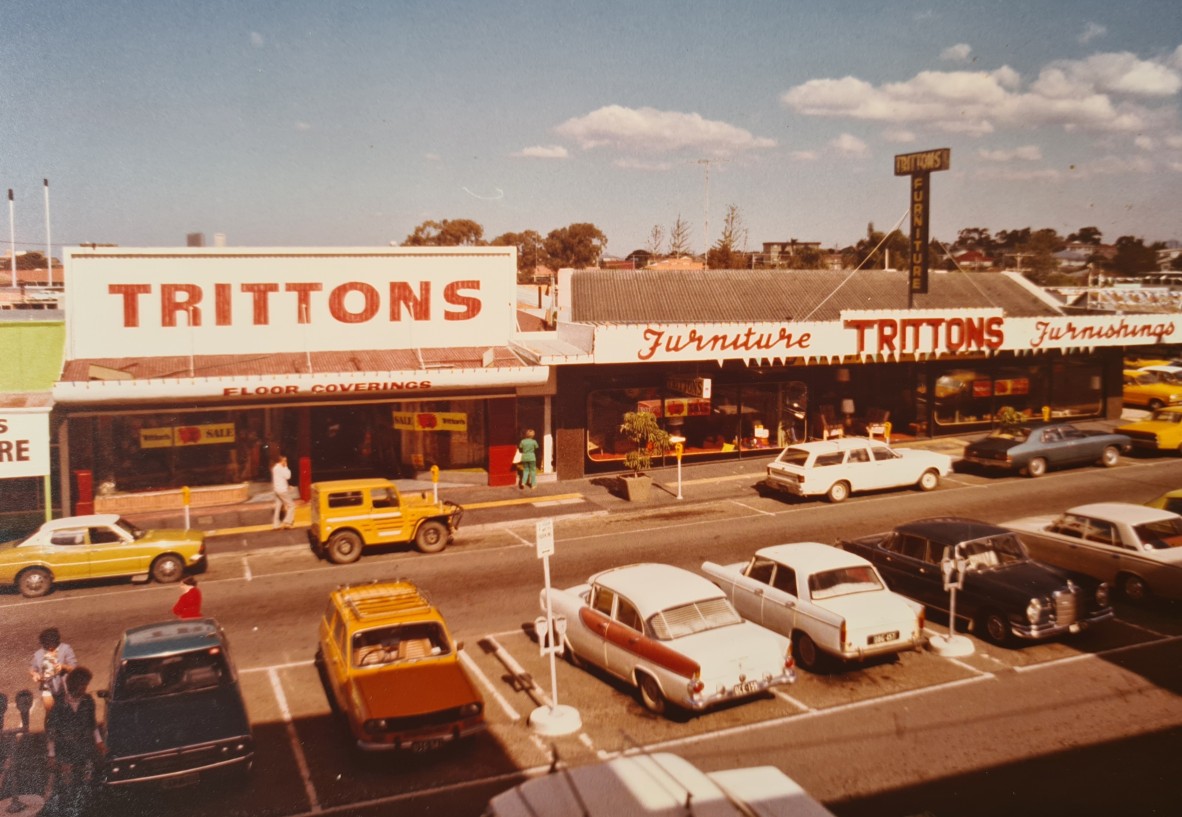
Trittons Store, Nerang Street Southport, 1970s. Photo courtesy of Ken Tritton
In 1964, the Tritton family established Trend Furniture. The Trend Factory produced furniture for the entire market, not just Trittons and Coupon, hence the name change. It traded from the Trittons Factory at West End during 1965, and from 1966, a new factory was established at 33 McCarthy Road, Salisbury. Machinery was transferred from West End to Salisbury, and West End became the bulk store. The Russell Street building was used to store carpets and other floor coverings. Initially carpets came in 27-inch (67.5cm) strips and had to be sewn together to cover a room. The sewing machines were kept there also. In later years the introduction of 12 foot (3.6m) wide broadloom carpet negated the need for the sewing machines.
The Russell Street bulk store was inundated during the 1974 flood and all stock was destroyed. It was purchased by Brisbane City Council to create parkland (later the site of Expo 88, and from 1997, the site of Queensland Performing Arts Centre Playhouse).⁶
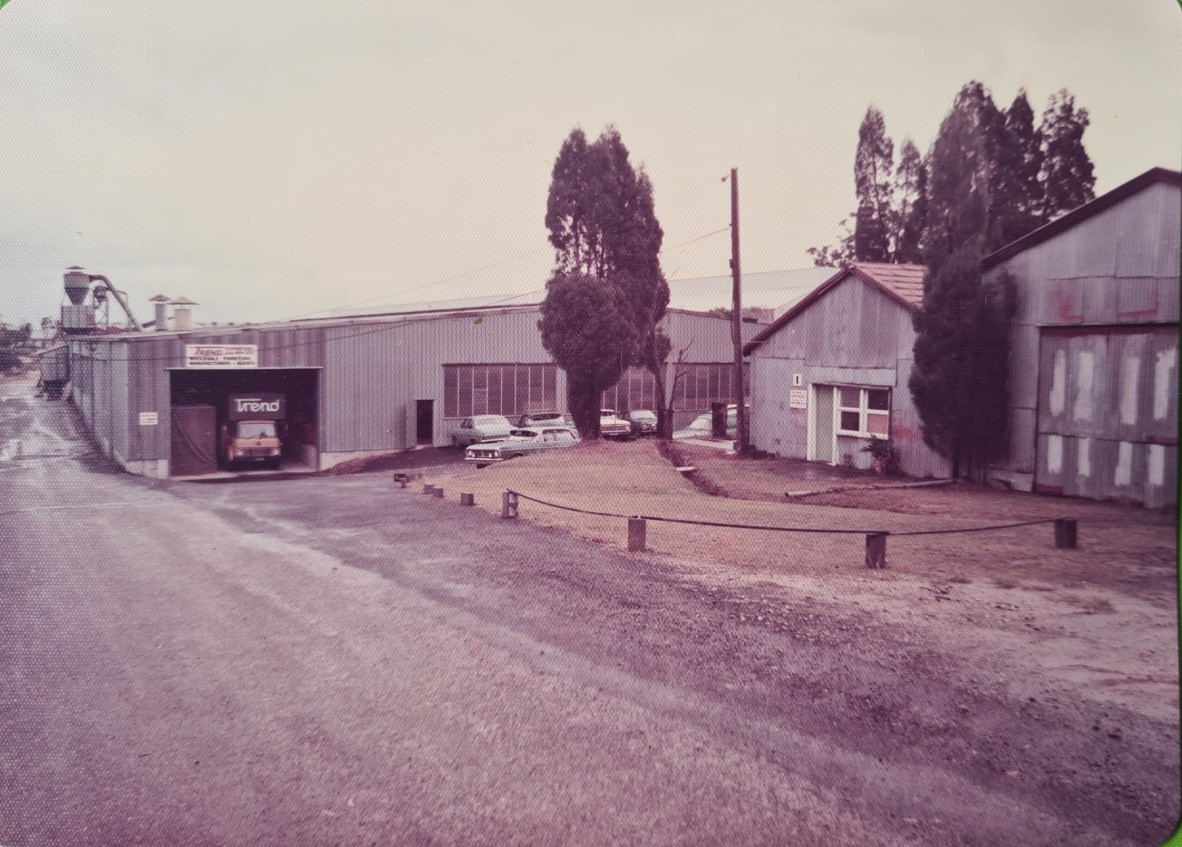
Trend Furniture Factory, Rocklea, Exterior, 1970s. Photo courtesy of Ken Tritton
A further store was established in Nambour following the April 1967 acquisition of Harberger’s store. They had been trading since 1950, having combined the premises of Flick Brothers’ Cabinet Making and Wally Taylor’s Blacksmith shop. Trittons renovated and remodelled the store in the early 1970s.⁷
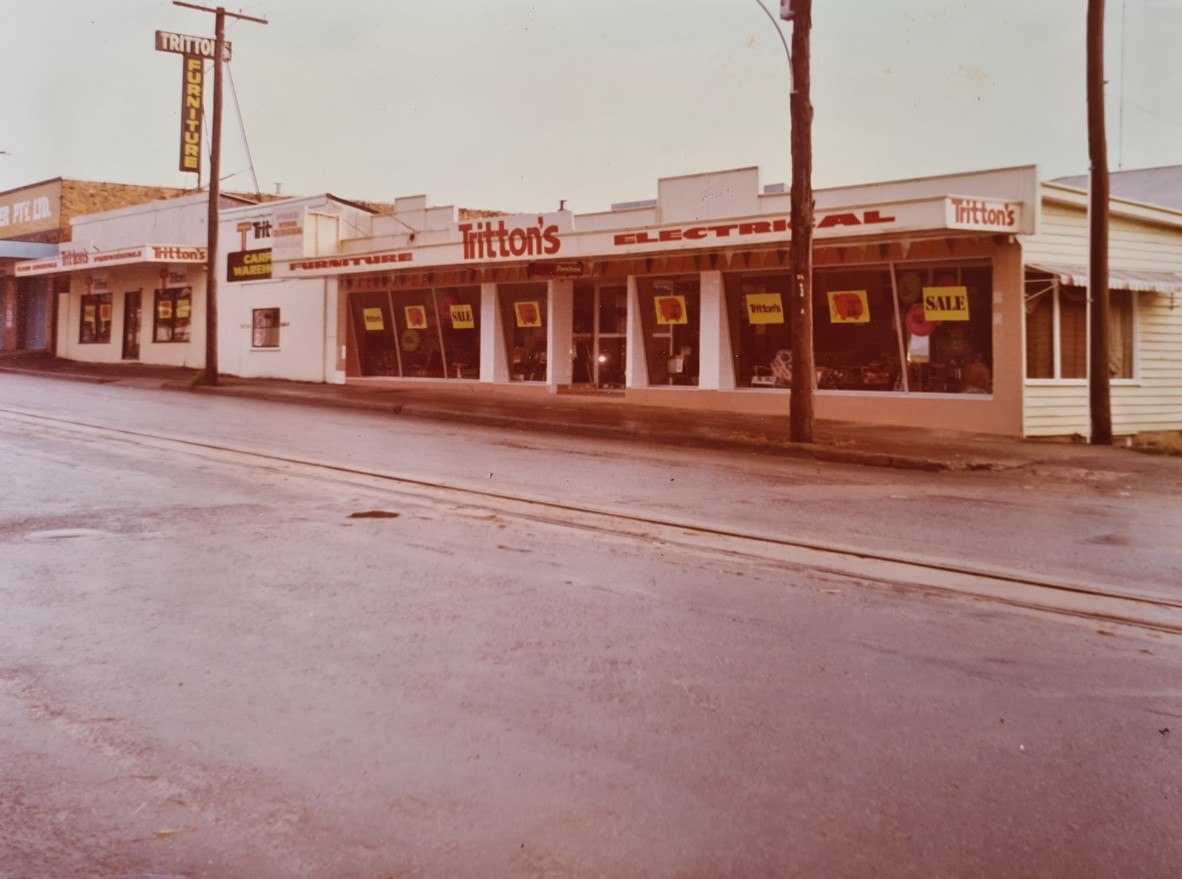
Trittons Nambour Store, 1970. Photo courtesy of Ken Tritton
The establishment of drive-in shopping centres presented new opportunities for Trittons. Garden City Shopping Centre at Mount Gravatt opened in October 1970, where Trittons shared a location with McDonnell and East Department Store. The businesses held complementary stock; McDonnell and East sold clothing shoes, haberdashery, and bedlinen, while Trittons sold furniture, floor coverings, and home decorator items. Trittons occupied a store in Chermside Shopping Centre (established 1957) from mid-1971.⁸
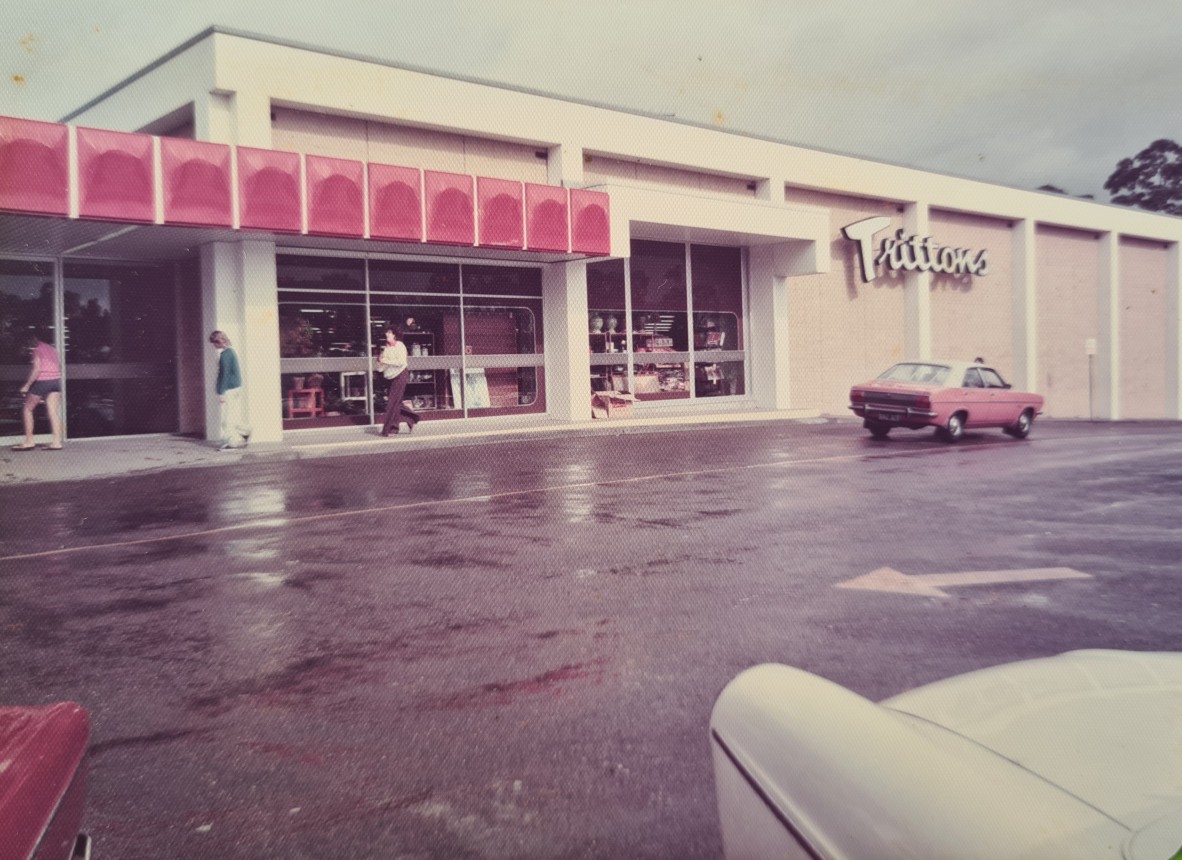
Trittons Garden City, 1970s. Photo courtesy of Ken Tritton
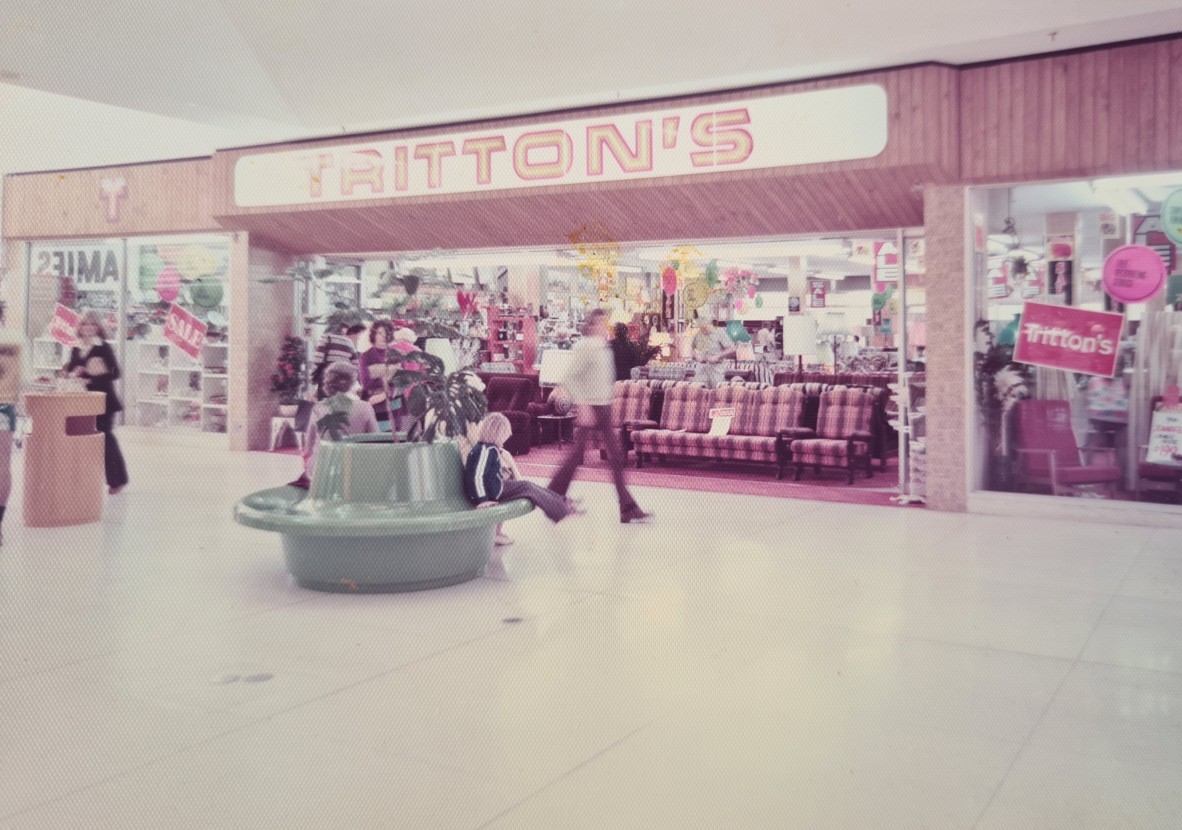
Trittons Chermside Store, 1970s. Photo courtesy of Ken Tritton
Coupon Furniture also expanded in the early 70s, opening a store at the Big Top Shopping Centre in Upper Mount Gravatt, and at 729 Stafford Road Everton Park. In 1975-76 another subsidiary company, Furniture World, operated from 180A Pickering Street, Alderley. In 1981, the business opened two ‘Barewood and Bedding’ stores. Trittons opened another store in the Arndale Shopping Centre, Market Square, Sunnybank.⁹ The George Street premises remained the company’s flagship store.
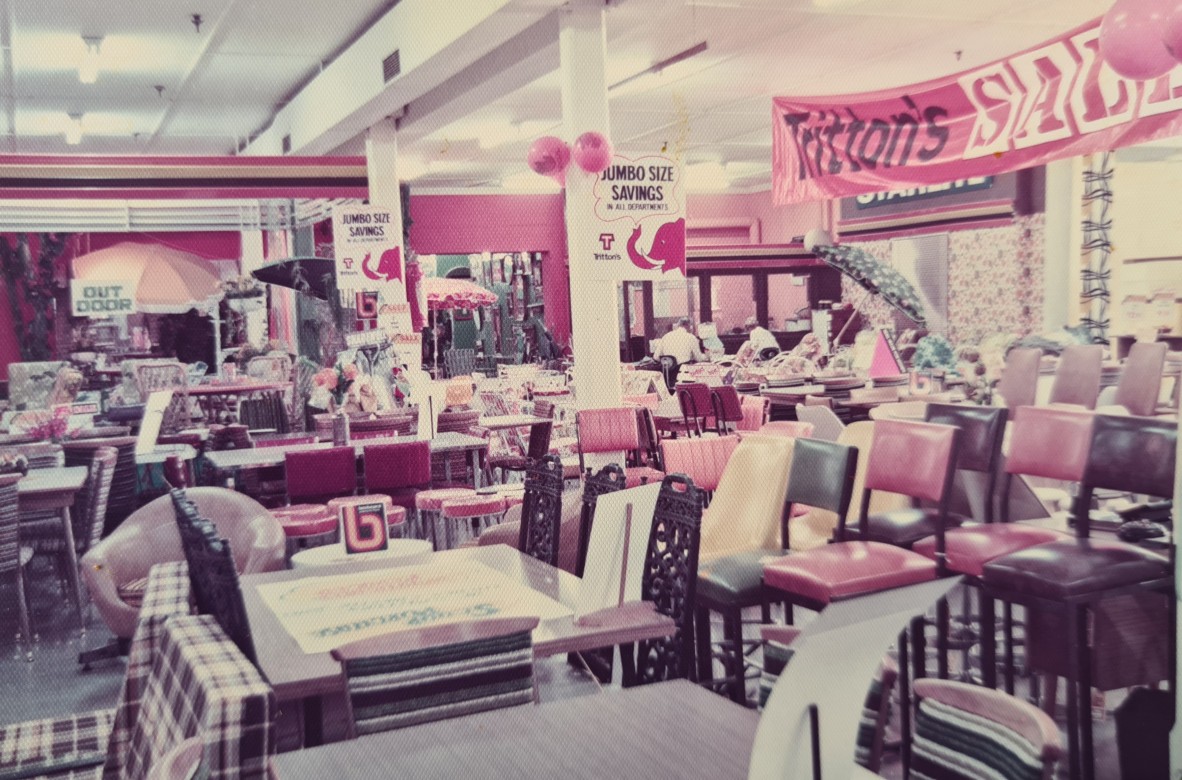
George Street, Tritton Store, Brisbane, 1970s. Photo courtesy of Ken Tritton
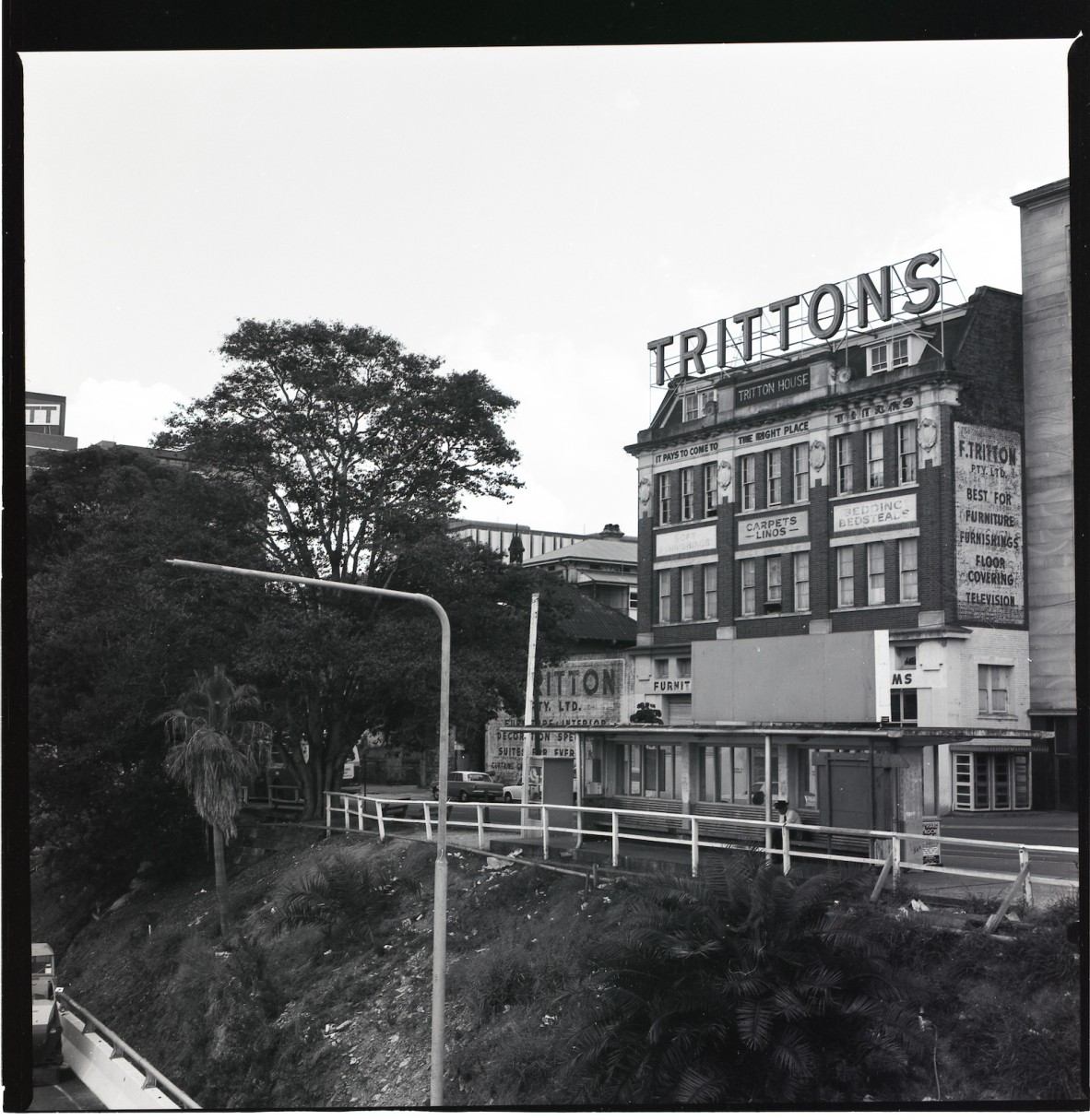
Tritton Building, George Street, Brisbane, 1973. Mark Baker, photographer. 32835 Mark Baker architecture photographs. John Oxley Library, State Library of Queensland. Image number: 32835-0004-0044
Trittons adopted a new logo in the mid-1970s, which was used on their advertising such as on railway bridges. Staff working in the publicity office thought that news coverage of a truck stuck under a bridge was simply free advertising for Trittons.
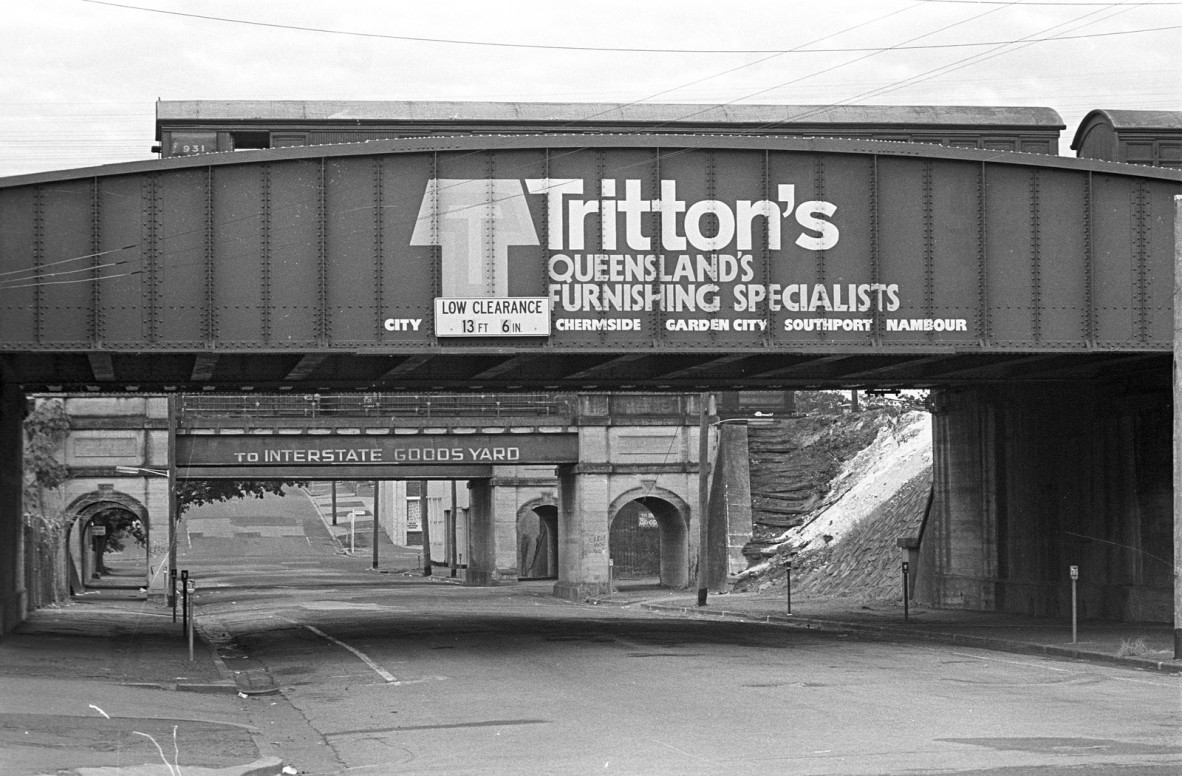
Advertising for Tritton's furniture stores on a railway bridge at South Brisbane, 1977. Colin Aggett, photographer. 32061 Colin Aggett photographs of Brisbane and surrounds. John Oxley Library, State Library of Queensland. Image number: 32061-0025-0001
Another method of saturation advertising was employed by Trittons from the early 1940s – that of advertising on bus and tram tickets, which continued through to the late-1970s.¹⁰

Tram tickets with Trittons advertising. Photo courtesy of Mary Howells
Mahlstedt’s Fire Insurance Plan No 5, 1951, Brisbane City Council Archives – indicates the lane between the old Lands building (Railways building from 1910) and Trittons.
In 1975, the extension of Adelaide Street through to North Quay (planned since 1905) was finally built. Trittons had been threatened with resumption in 1920, and again in 1953. The laneway between Trittons and the Supreme Court was expanded, with the demolition of the old lands/railway buildings and the watch house. While new court buildings were in the planning stage, a fire in the Supreme Court buildings in 1968 expedited this process. The Adelaide Street extension was formally opened on 3 November 1975, and the old Supreme Court demolished in 1976. The extension of the street allowed for the construction of a restaurant with a glazed awning roof along Tritton’s Adelaide Street facade, designed by architect Robin Gibson. This construction was the first step towards alfresco dining, which was unheard of in Brisbane at the time.¹¹
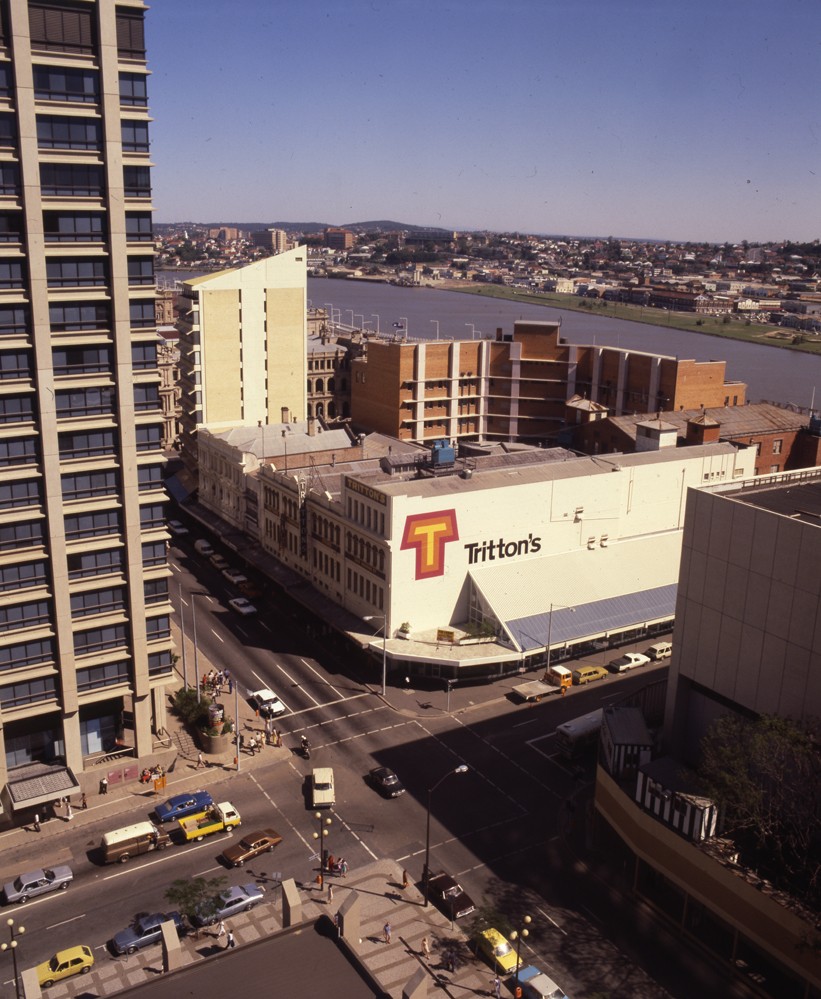
Tritton's Furniture Building corner George Street and Adelaide Street - 1980. Brisbane Images, Brisbane City Council. Image BCC-T54-0520
Mary Howells - 2022 Queensland Business Leaders Hall of Fame Fellow
The Queensland Business Leaders Hall of Fame is an initiative of QUT Business School, State Library of Queensland.
Other blog articles by Mary Howells
- Fred Tritton - From Second-hand Dealer to Furniture Manufacturer (1886-1910)
- Trittons - Gold Medal Manufacturer (1910 – 1930)
- What Depression? Trittons prosper during the early 1930s
- Fred Tritton: Renaissance man
- From Austerity to Prosperity: Trittons in the 1940s
- Tritton’s Legacy
References
1. Cole, John, Shaping a City: Greater Brisbane 1925-1985, Eagle Farm: William Brooks, 1984, p.124; ‘Govt Determined on Petrol Rationing End’, Brisbane Telegraph, 25 January 1950, p.3.
2. ‘Scooters Trikes, Motor Cars, Dolls prams, dolls etc’, 29 November 1947, p.14; ‘Trittons Nursery Furniture’, Balonne Beacon (St George), 1 July 1948, p.3.
3. ‘For Queen’s City Hall Room’, Courier Mail, 18 February 1954, p.7; ‘They’ll meet the Queen Today,’ Courier Mail, 17 March 1954, p.12.
4. The least expensive model of TV in this catalogue priced at 165 guineas (1 guinea was 21 shillings), £173, or 3465 shillings. According to the ABS 1956, the average weekly wage of a male worker in Queensland was 309 shillings; therefore, the price of the TV was about ten times his weekly wage.
5. Australian Securities Commission register, Tritton Guarantee Corporation Ltd, 24 Feb 1959, contextual information supplied by Ken Tritton; Picture Sunshine Coast, description with photo of Trittons store, Sunshine Coast Library Catalogue.
6. Australian Securities and Investments Commission, Company Summary, and historical extract, Trend Furniture online www.asic.gov.au; Family business information provided by Ken Tritton.
7. Gold Coast City Council, Picture Gold Coast, descriptor for 1964 image of Taylors Furniture Store; references Gold Coast Bulletin, 4 November 1964.
8. Kowald, Margaret; Donovan, Val; Kerr, Ruth; Cohen, Kay; Smith, Lindsay; Stewart, Jean in Lost Brisbane 2 and Surrounding Areas, The Later Years, The Royal Historical Society of Queensland, Brisbane, 2016, pp. 113, 123; Trittons advertising, Australian Women’s Weekly, 14 July 1971, indicates five stores.
9. PMG/Telecom Yellow Pages, 1965-1983.
10. Glen Dyer from the Brisbane Tramways Museum has found tram tickets with Trittons advertising, in Brisbane City Archives collection dating to 1944. He suggests Trittons ceased advertising on tickets after 1975.
11. Kowald et al, op. cit, p.63, ‘Adelaide Street Proposed Extension’, Daily Mail, 6 September 1920, p.4; ‘Plans before Council Today, Big Street Works for New Bridge’, Courier Mail, 15 September 1953, p.3; Bar Association of Queensland https://www.hearsay.org.au/moving-house-a-brief-history-of-the-supreme-court-buildings/ .
Comments
Your email address will not be published.
We welcome relevant, respectful comments.